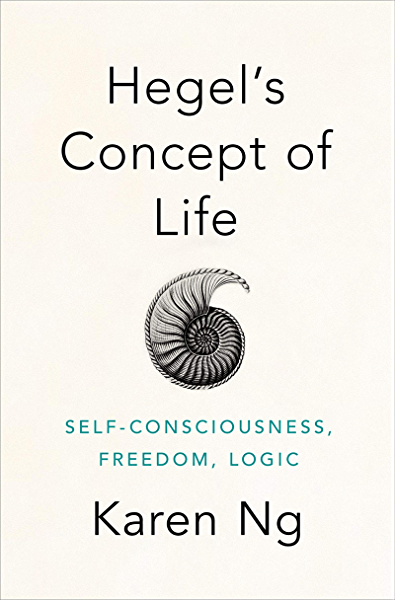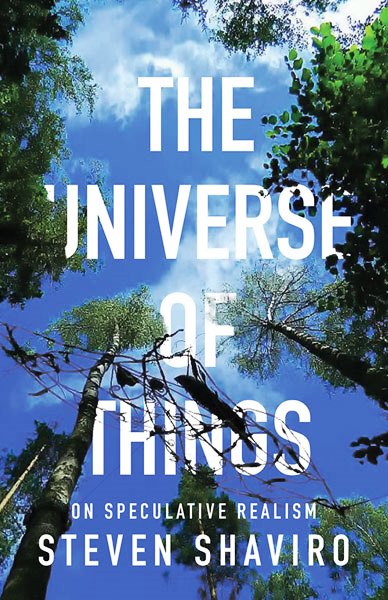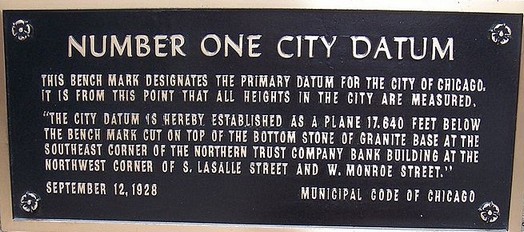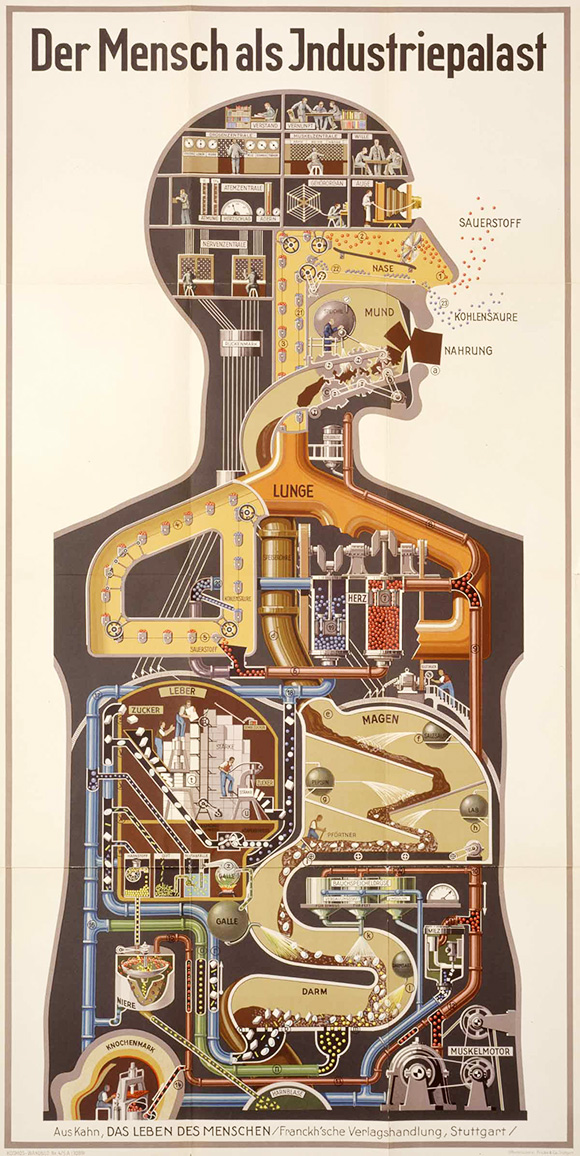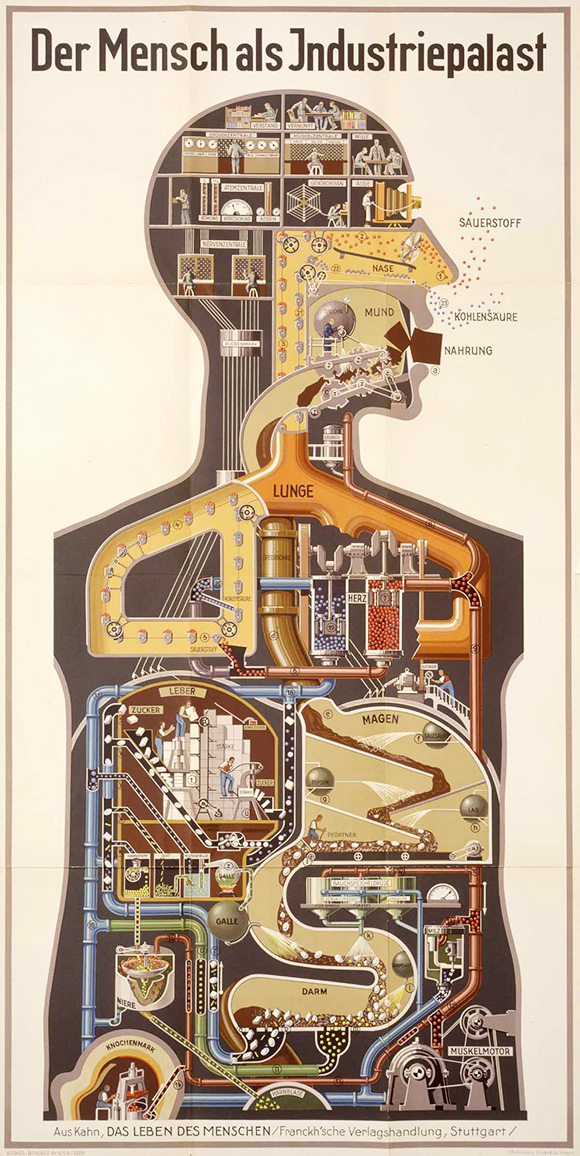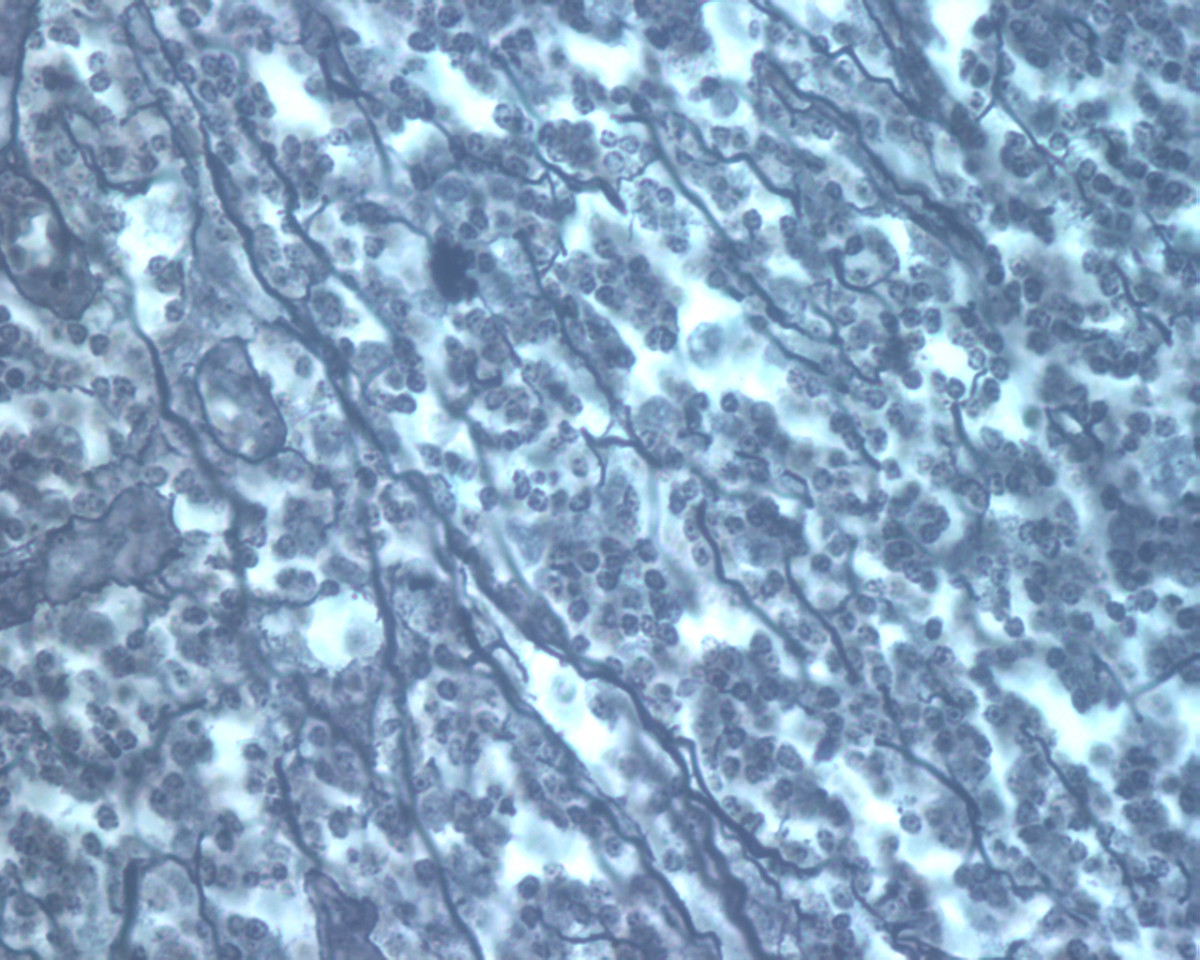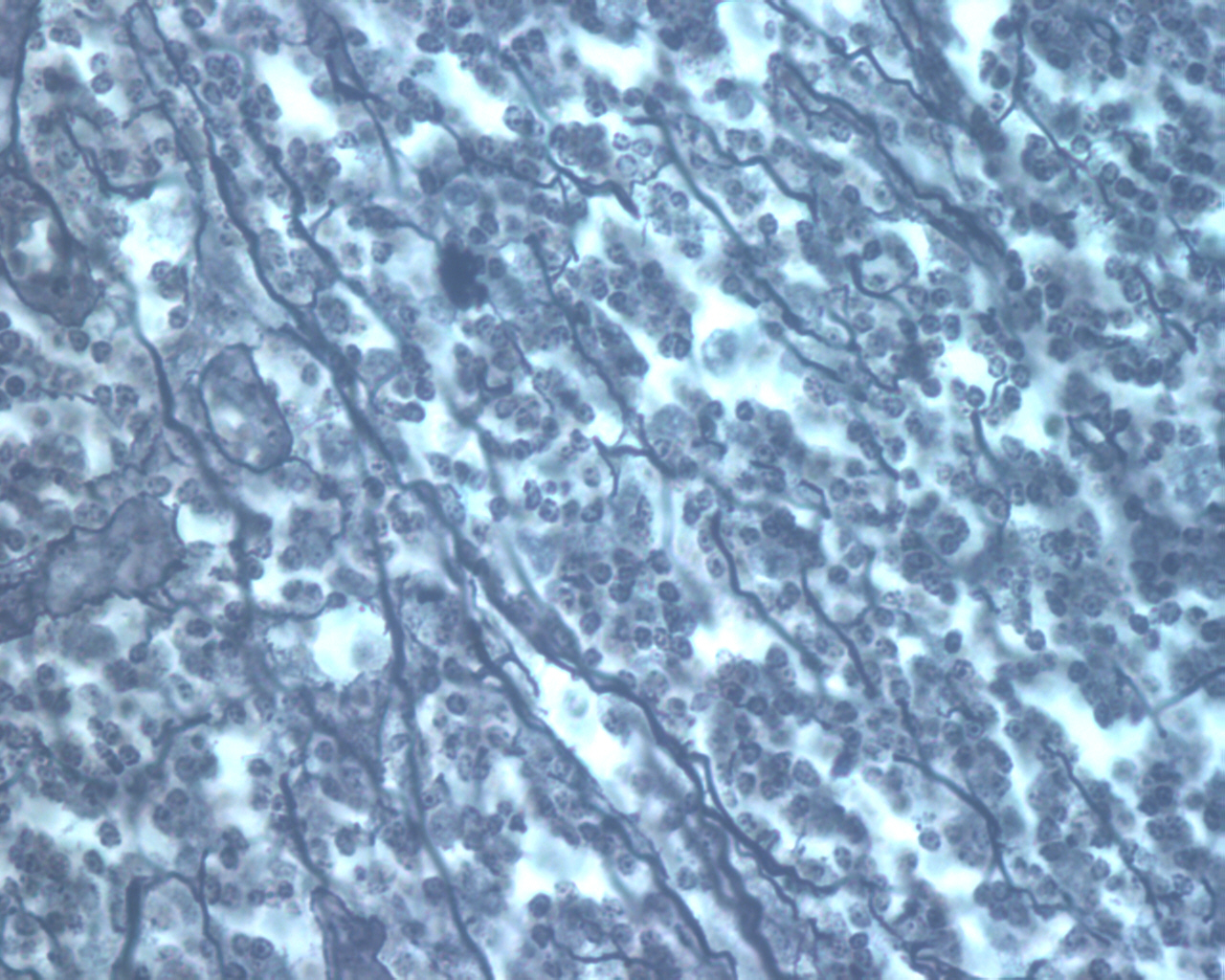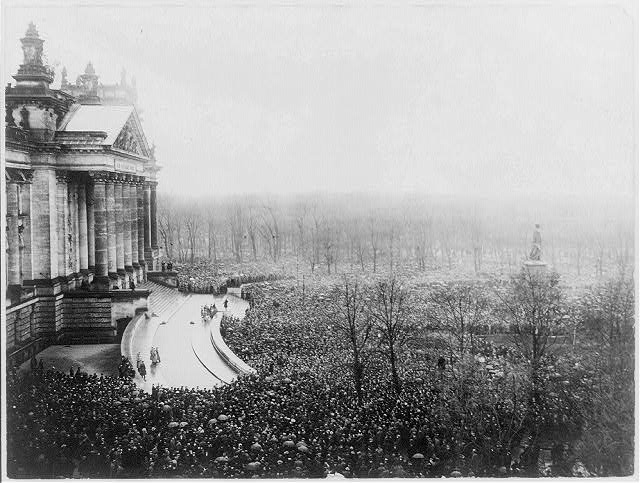a response to Karen Ng, Hegel’s Concept of Life: Self-Consciousness, Freedom, Logic (Oxford University Press, 2020)
~
The question of Hegel’s idealism has haunted the traditions of philosophy and critical theory for nearly two hundred years. In Marx’s early works, he polemicizes against Hegel’s alleged rationalization of the modern state on the basis of his Science of Logic. Adorno conjures the indelible image of the Hegelian system as “the belly turned mind,” swallowing up the empirical world.[i] On the philosophical side, Schelling—Hegel’s contemporary and former mentor—objects to Hegel’s supposed prioritization of spirit over nature, while thinkers from Heidegger to Foucault spurn Hegel’s rationalism, his apparent neglect of contingency.[ii] In more recent history, the debate over Hegel’s idealism has taken the form of a contest between purportedly “metaphysical” and “non-metaphysical” readings of his system, represented by figures like Stephen Houlgate and Robert Pippin, respectively. As has recently been pointed out, this repeats with a difference, in a de-politicized form, a much older contest: between Left and Right Hegelianism.[iii] Haunting each of these contexts is the specter of a problem that, ironically, Hegel was the first to rigorously identify: the “subjective idealism” of Kant’s critical project. It is the problem of the imposition by mind of its own form on recalcitrant matter; the threat of a permanent disjunction between mind and world; a divide beyond which knowers cannot reach, the infamous no man’s land of “things in themselves.” The most ambitious recent accounts of Hegel—from Pippin’s Hegel’s Realm of Shadows to Robert Brandom’s A Spirit of Trust—have sought to clear Hegel of the charge of subjective idealism and to demonstrate the objective purport or world-directedness of his most fundamental categories. Hegel’s odds of beating his case have never looked better.
Yet in several major ways, it could be argued, even these attempts have failed to fully vindicate the Hegelian project. As a number of commentators have noted over the years, thinkers like Pippin and Brandom have not done full justice to Hegel’s naturalism, a key ingredient in his attempt to overcome the subjective idealism of his two great predecessors, Kant and Fichte. For example, J.M. Bernstein and John McDowell have challenged Pippin’s disavowal of Hegel’s Aristotelian and post-Kantian emphasis on the category of life. As Pippin and Brandom have argued, human action cannot be satisfactorily explained in naturalistic terms. If we want to know why a young nationalist assassinated Archduke Franz Ferdinand in 1914, we do not ask which neurons fired when, or which physiological mechanism enabled his fingers to pull the trigger. We ask what his reasons were, why such an action showed up as worth undertaking under such conditions. For the anti-naturalists, then, what must be avoided is scientific reductionism, the cession of distinctly philosophical territory to neurobiology, but also bad metaphysics, the mythical idea of a world-creating spirit or of spirit as the “end” of nature. Whereas Pippin and Brandom have frequently argued that a hard distinction between spirit and nature, the space of reason and the space of causes, is at play in Hegel’s thought, McDowell in particular has sought to show that the anti-naturalists have a “boot-strapping” problem, whereby reason comes to look “supernatural” or “spooky.” According to McDowell, nature is not reducible to a disenchanted “space of causes,” since it also consists in the purposive activity of self-organized living beings, plants and animals. Such organisms establish a context of meaning internal to nature, which rational beings like us activate in a distinctly self-conscious, discursive, social, and historical manner. As McDowell argues, human freedom or reason is not “a kind of exemption from nature, something that permits us to elevate ourselves above it,” but rather “our own special way of living an animal life.”[iv] Likewise, in Bernstein’s critical writings on both Pippin and Brandom, he has argued that the “living” nature of rational agents is not only essential for rendering the idea of agency intelligible; it also has crucial implications for political questions surrounding social organization and what an emancipatory society would actually require—a key concern of all students of Hegel’s philosophy.[v]
This critical discussion has unfolded over the course of several decades and has in recent years come to something of a head. Karen Ng’s new book, Hegel’s Concept of Life: Self-Consciousness, Freedom, Logic is the latest installment in the debate over Hegel’s naturalism and an important contribution to the ongoing “analytic” reassessment of Idealism in general and of Hegel’s Science of Logic in particular. The key claim of Hegel’s Concept of Life is that the idealist project of articulating the a priori conditions of action and experience remains radically incomplete “without a systematic accounting of life’s essential and constitutive role” in cognition (4). Ng is not alone here; other thinkers have recently defended the centrality of life to Hegel’s project, including Terry Pinkard, James Kreines, and Thomas Khurana, in addition to Bernstein and McDowell. An important neo-Aristotelean strand of Idealism scholarship has also exhibited a preoccupation with the question of life, as illustrated by the work of Michael Thompson and Robert Stern. But Ng takes her account to be distinguished by its singular focus on the systematic implications of Hegel’s logical concept of life, which is meant to specify—in a Kantian vein—a fundamental condition for the intelligibility of objects as well as of reason itself. Indeed, the most prominent refrain throughout the book is the claim that “life opens up the possibility of intelligibility as such” and that “life opens up the space of reasons itself” (7, 10).
In the tradition of McDowell and others, Ng’s book turns to the concept of life to overcome the limitations of the strand of Hegel scholarship often associated with Pippin’s path-breaking work from 1989, Hegel’s Idealism, which reads Hegel in terms of his inheritance of Kant’s account of self-consciousness in the first Critique. While Ng does bring into view some essential components of a possible solution to problems raised by Pippin’s account, her work also exhibits some of the major pitfalls of a new naturalism. At the same time, Ng’s program should be starkly contrasted with the critique of Pippin’s work undertaken by thinkers like Slavoj Žižek and Adrian Johnston, who have sought to downplay claims about the priority of Hegel’s Science of Logic within the Encyclopedia (his system) and have defended a Schelling-inspired materialism against the “rationalism” of analytic Hegelianism, often in the name of a radical politics.[vi] Ng defends the priority of the Logic and is critical of the later Schelling—with a Marx-informed critical theory as the ultimate horizon of her philosophical endeavors.[vii]
Hegel’s Concept of Life is a lucid, meticulously researched work that uncovers neglected yet deeply consequential aspects of Hegel’s thought, from his critique of Fichte’s underdetermination of the “objective” dimension of subjectivity to the explosive role played by the concept of life in the Logic. Divided into two parts, the book comprises three chapters on the concept of purposiveness in Kant and Hegel and five chapters on the “purposiveness of thinking” in the Logic. The work demonstrates a mastery over a broad swath of idealism scholarship and is positioned in relation to several contemporary debates, key among them the debate over the way in which Hegel inherits the Kantian project. This is both where Ng’s book makes its most important contribution and where—in certain crucial respects—it comes up short. As I will argue below, Ng’s own solution to the problem of subjective idealism fails to adequately address Hegel’s renovation of Kant’s understanding of self-consciousness and his famous Transcendental Deduction, which creates significant problems for her account as a whole.
Ng announces early on her intention to displace what she calls “the apperception view” (13), a reading of Hegel she identifies with the work of Pippin, McDowell, and Brandom. This is already a somewhat problematic move, both because of the major disagreement between McDowell, on the one side, and Pippin and Brandom, on the other, over the naturalism question and because of significant differences between all three regarding the apperception issue itself.[viii] It is also worth noting that Ng does not engage with McDowell’s extensive discussions of the basis of reason in the activity of life, in the chapters on Aristotle in Mind and World but also in “Two Sorts of Naturalism” in Mind, Value, and Reality.[ix] Ng subsumes McDowell under the “Pippin reading,” frequently citing his famous claim regarding the “unboundedness of the conceptual” in Mind and World, but she ignores the naturalist argument—fervently contested by other proponents of the so-called “apperception view”[x]—that underlies McDowell’s notion of conceptuality. Drawing on Aristotle, McDowell works to overcome the idea that the spontaneity of thought is unconstrained by empirical reality and thus entails the “frictionless spinning” of our concepts. Against this view, he argues that reason is not a non-natural faculty operating separately from the perceptual capacities we share with other animals; rather, the true difference lies in that our sensible faculties themselves bear a rational, conceptual form.[xi]
The differences just alluded to are levelled by Ng’s notion of the apperception view. Nevertheless, in broad strokes, this view holds that the crux of Hegel’s idealism lies in his attempt to fulfill the promise of the B-Deduction of Kant’s first Critique. That promise, so the claim goes, was to demonstrate that “the synthetic unity of apperception” is the original source of unity for both concept and intuition, understanding and sensibility. In the Deduction, Kant had shown that the pure categories of the understanding confer conceptual unity on the content delivered by the pure forms of intuition, space and time. What Kant calls “transcendental logic” is not an account of the formal rules of thinking regardless of the content (what he calls “general logic”) but an account of “the rules of the pure thought of an object.”[xii] Kant establishes that the unity of the content of experience is a function of the self-conscious or “apperceptive” application of the categories in judgment, the basic unit of thought in Kant’s account. Pure concepts or categories are not heuristic devices or rules of thumb that one can choose to follow or not; they are rather rules that we give to ourselves just in judging anything to be the case. The categories determine how we must judge if experience is to be intelligible.
According to Pippin (and McDowell), Hegel radicalizes Kant’s position by arguing that there is no non-conceptual, species-specific form of intuition (space and time) that constrains the categories constitutive of knowledge; that self-consciousness alone determines the categorial conditions for the possibility of objects of experience. The conceptual is thus “unbounded” and does not “fall short” of “things in themselves”[xiii]; it is not limited by or relegated to the brute fact of “our” forms of intuition. Hegel’s Science of Logic thus does not need what Kant calls the “Transcendental Deduction,” whose aim was to demonstrate the applicability of the pure categories to the forms of intuition. All that is required is a “Metaphysical Deduction,” a derivation of the pure categories themselves. Hegel’s Science of Logic just is such an expanded metaphysical deduction, the determination by pure thought of the concepts required for determining a possible object—not just “for us” but as such, for any possible knower.
On Ng’s view, the approach of the Pippin camp overestimates the significance of Kant’s Deduction argument and yields a “subjective idealism”—that is, a “prison-house” view of categoriality that cannot make contact with the empirical world (13). For reasons that will become apparent, I think this is a faulty objection, but Ng’s second criticism of the apperception view—which pursues a line of argument first developed by Bernstein and McDowell—is closer to the mark. Thinkers like Pippin and Brandom “affirm self-consciousness’s beginnings in life while stripping life of any positive explanatory force in the theoretical and practical activities of self-determining reason” (Ibid). For example, in Brandom’s influential reading of the master/slave dialectic, he claims that part of what is demonstrated by the “struggle to the death” over the desire for recognition is that “the life one risks is not an essential element of the self one is thereby constituting, while that for which one risks it [a position of recognized authority] is.”[xiv] Brandom’s approach must ignore Hegel’s own claim that “self-consciousness learns that life is as essential to it as is pure self-consciousness,”[xv] but it also renders inexplicable the relationship between sensibility and rationality, desire and freedom, nature and spirit. As Ng will proceed to argue, in a systematic manner virtually unparalleled in contemporary Hegel scholarship, self-consciousness has its ground in the category of life, without which the categories of reason, spirit, and self-consciousness would lack content, a determinate relation to the world.
In contrast to the apperception view, Ng aims to demonstrate the outsized influence of Kant’s third Critique on Hegel’s project, arguing that the key to the Logic is Hegel’s appropriation of Kant’s category of “inner purposiveness,” which was employed in the third Critique in two key ways. First, Kant tried to show that the account of judgment in the first Critique was radically incomplete and troubled by a lingering problem of “cognitive fit” (45-6). In other words, Kant had not shown that nature actually exhibited the unity and regularity that the pure categories of the understanding were supposed to impose, leaving room for the possibility of what Ng calls “empirical chaos,” following Henry Allison (32). The category of substance may empower us to judge the unity of an object with properties persisting in time, but it is not able to grasp that object as a member of a species, as living or as non-living, and so on. In the third Critique, judgment assigns itself a new principle—the principle of purposiveness—in order to guide the formation of empirical concepts and the pursuit of scientific knowledge, which must presuppose the systematic unity of nature.
Second, the principle of purposiveness licensed the distinction between law-governed, mechanical processes and the sorts of activities characteristic of living beings. This marked what Hegel refers to as “one of Kant’s great services to philosophy,”[xvi] his formulation and revival of the Aristotelian idea of inner purposiveness. Whereas the use of trees to make paper gives them an “external purpose,” relative to our ends, plants have the specific parts that they do (limbs, leaves, roots) and behave in specific ways (heliotropism, photosynthesis) in order to satisfy the “inner purpose” of their own self-reproduction (and the reproduction of their kind). A tree with a “sick” limb or dried up roots is deficient not by any external lights but by its own lights, in accord with its own purpose of maintaining itself. For a tree to be a tree, it must act to satisfy its purpose, “actualizing” its species-concept (Gattung), which furnishes a normative standard prescribing how individual trees ought to be. According to this Aristotelian conception of “actuality” (energeia), for something to be actual is for it to act in accord with its concept, to fulfill the potential (dynamis) its matter embodies.[xvii]
Yet on Kant’s picture, purposiveness is merely a “regulative” rather than “constitutive” principle—a principle that judgment “heautonomously” requires of itself for scientific inquiry but that it does not “autonomously” give to nature as a principle genuinely constitutive of the objects of experience (47). Following Allison, on whom Ng relies extensively in the book’s early chapters, she argues that this distinction does not really hold up under scrutiny, that the “as if” character of regulative judgments itself seems to commit one to “the thought that nature is purposively constituted such that teleological explanations are satisfactory” (59). And it is precisely here where Hegel will seek to rescue Kant from himself, by showing that purposiveness is not just a regulative principle with merely subjective validity but a principle with actual purchase on objectivity. Ng emphasizes that Hegel is posing the “quid juris” question of our right to employ the concept of life and that he overcomes Kant’s subjectivism by showing that life is the “objective context in which subjects, objects, and their relationship come to have meaning at all” (7). There is little question that this is what Hegel is trying to do. The issue is how Hegel achieves such an overcoming of Kant.
In developing the thesis of life’s constitutive role in cognition, Ng is careful to defend Hegel against the charge that he is a hylozoist who believes that all matter is living, that nature is one big organism or world-soul, and that all judgments are teleological judgments premised on the idea that everything has a purpose. As Ng makes clear, Hegel does not hold such views: the Science of Logic “eschews making substantial claims about the construction of matter” and is rather concerned with “a theory of conceptual form and activity” (63). Indeed, Hegel takes there to be and argues for a necessary distinction between mechanical/chemical, biological/organic, and rational/spiritual modes of being. Not everything in the world is living, but the inanimateness of the world is only intelligible from the standpoint of life—of living beings for whom the distinction between the living and the non-living, between the mechanical and the teleological, matters (226). It matters to the snake, for example, that it be distinct from its environment, that it not be just another inert thing. It strives to resist the mechanical and chemical process of decomposition, which threatens to reduce it to dust.
As I have noted, Ng’s books aims to show that Hegel solves the problem of subjective idealism by virtue of the category of life. Yet what I want to begin to highlight here is that Ng’s approach leaves unanswered the question of how Hegel’s method of the derivation of such “constitutive” categories is distinct from Kant’s. Because of Ng’s denial of the centrality of Hegel’s take on the “deduction” issue (13), she misses an essential aspect of Hegel’s solution to the general problem of the subjectivism of the categories. As will become clear, Ng tends to treat life as a mediating category that ensures that cognition has content through its “living” contact with the empirical world. By contrast, on the interpretation of Hegel I want to defend, the Logic is concerned with the very intelligibility of a world as a world.[xviii] Life plays an essential role in this latter enterprise, but that role cannot be properly specified outside of an account of two key moves in Hegel: (1) Hegel’s overcoming of the Kantian distinction between transcendental and general logic, through which Hegel shows that there can be no coherent account of the pure forms of thought (general logic) that is not already an account of the pure forms of things (transcendental logic).[xix] And (2) Hegel’s radicalization of Kant’s strategy in the metaphysical deduction, whereby we do not just derive “our” “conceptual scheme” but the categorial form of being itself, in light of which any empirical being is in principle thinkable.[xx]
In this context, it is also worth mentioning a problem on the level of rhetoric. Hegel calls the notion of inner purposiveness “one of Kant’s great services to philosophy [eines der großen Verdienste Kant um die Philosophie],”[xxi] whereas Ng repeatedly misquotes Hegel as saying that it is “Kant’s great service to philosophy” (6, 16, 260), going so far as to use the modified phrase as the title to chapter two. This is symptomatic of the general tendency towards one-sidedness in her study, its neglect of Hegel’s emphasis on Kant’s other great service: his articulation of the transcendental unity of apperception, which is the basis for the self-determination by thought of the necessary constraints on the thought of an object.[xxii] As the frequently cited passage reads: “It is one of the profoundest and truest insights to be found in the Critique of Reason that the unity which constitutes the essence of the concept is recognized as the original synthetic unity of apperception, the unity of the “I think,” or of self-consciousness.”[xxiii] A further consequence of Ng’s neglect of the structural significance of apperception—a consequence related to the inability of her Hegel to fully overcome subjective idealism—is that she cannot explain such claims as: “Every thought-determination of the Logic has revealed itself to be insufficient in some way […]. Very often in Hegel, these failures are couched in terms of one-sidedness, fixed dualisms, abstractions, or internal inconsistencies” (248). As we shall see, such inconsistencies are inconsistences internal to thinking, to which thought must be “apperceptively” responsive if it is to consistently think the thought of being—and ultimately the thought of thought itself.
At the end of chapter two, Ng introduces one of her major interpretive theses, that Hegel’s notion of the “concept” is best understood in terms of the Kantian idea of inner purposiveness. In Kant, the categories are predicates of possible judgments, rules that prescribe how one ought to judge; they are necessary for the determination of any empirical content. By the concept, Hegel means to capture the general idea of such self-legislated normative constraints. The concept is thus Hegel’s theory of conceptuality. Ng’s claim is that inner purposiveness is constitutive of conceptual activity, that acting and believing in light of norms derives its self-determining character from the internally purposive structure of life (62). This claim is worked out in detail in the third chapter of the book, which is one of its best. Turning to Hegel’s Fichtekritik in his first published work, Ng highlights the Schellingian aspect of Hegel’s critique: while Fichte makes important progress by demonstrating the primacy of practical rationality and the irreducibility of the “self-positing” of the I, he conceives the natural, embodied self as merely subject to mechanical laws and thus—in Hegel’s words—as “dead” (88). As Ng shows, this results in a picture of the I as engaged in an “infinite” struggle to subsume its recalcitrant nature under the dictates of reason, undermining its purported autonomy. The Hegelian solution, in brief, which Hegel shares with the early Schelling, is to grasp the “objective subject-object” (life) as bearing a non-mechanical, internally purposive form and thus as being “speculatively identical” with the “subjective subject-object” (self-consciousness) (107). That is, reason is not something wholly heterogeneous to life but is a higher and freer actualization of the same self-organizing form. As I understand this claim, rational agents are constrained by the necessity of satisfying the internal purpose of self-maintenance, but the requirements that specify what counts as successful self-maintenance are, for beings like us, not simply given but must be recognized by us and are subject to change, giving rise to the complex historical dynamic for which Hegel’s philosophy is best known. This barely scratches the surface of this rich and suggestive chapter, which also contains an important and highly original account of Hegel’s appropriation of various Kantian transcendental strategies for his deduction of life prior to the Logic.
Towards the end of part one, with the “apperception view” in her sights, Ng argues that Hegel answers the quid juris question of our entitlement to the concept of life “not by presenting life as a category among others in a metaphysical deduction” but by arguing that, without life, self-consciousness would itself remain unintelligible (111). While this is intended as a characterization of Hegel’s method in the Phenomenology, it also applies to Ng’s understanding of Hegel’s task in the Logic. As she further clarifies in Chapter 4 (an illuminating account of the engagements with Kant and Spinoza in the Logic of Essence), Hegel attempts “to provide, in the logical context, a series of arguments for the constitutive character of inner purposiveness for any account of self-conscious conceptual activity whereby determinations of thinking have the power to determine actuality” (126). Chapter 4 traces the transition from the Logic of Essence to the Logic of the Concept, showing how Hegel derives the standpoint of subjectivity—of which life is the first, immediate form—through a development of the concept of “actuality,” glossed earlier in terms of Aristotle’s notion of energeia. Through a demonstration of the emptiness of Spinoza’s conception of substance as the necessary cause of all finite things (137-8), Ng’s Hegel defends a version of what Paul Redding has called “modal actualism” (Redding 2017), the view that possibility and necessity are constrained by what is actually the case. (Kant’s theory of pure intuitions is also “actualist” in this sense, insofar as they are meant to limit the application of the pure categories to reality.) Contrary to widely held views about Hegel’s position, he establishes in the Logic of Essence the “necessity of contingency,” which grounds the idea of real rather than merely logical possibility: it is logically possible (it does not violate the law of non-contradiction) that the moon might be made of cheese, but it is not really possible—the contingent conditions are not in place for such a possibility to be actualized (145).
Yet actuality remains “blind,” in Hegel’s words, reducible to mechanical necessity, without the notion of purposive self-actualization. Ng’s illuminating example is of a musician whose father’s death prompted him to cultivate his musical talent; his father in turn was shot and killed in a war. Does that mean that the bullet that killed the musician’s father was the cause of his musical career? The potential endlessness of such explanations—what about the causes that led to the bullet’s production?—reflects their unsatisfying nature. They point to the need for an internal explanatory principle, whereby the son can be grasped as determining for himself that music was worth taking up and pursuing (154-55). In holding himself to such a principle (in valuing himself under the description of the “practical identity” of musician, to borrow Korsgaard’s phrase),[xxiv] the son becomes subject to a norm, a criterion of success and failure, in light of which he must discriminate between what he ought and ought not do as a musician. Likewise, it can thus be asked whether he is “actually” a musician, whether he is not just pretending, perhaps acting on his father’s wishes, or just temporarily sublimating his grief. It is “actuality” in this sense of purposive striving that secures the determinacy of objectivity in Hegel’s account, constituting things as the distinct things that they are and furnishing a truly satisfying—that is, internal and self-determined—principle of explanation.
Note that this does not mean that all things are “actual” in this sense. An inanimate entity like the moon does not have an internal purpose; to explain its constitution and its orbital activity, we must make reference to natural laws. It is thus subject to a lower explanatory principle, mechanism, which depends for its intelligibility on the activity of self-actualizing living beings, which distinguish themselves a priori from inert matter, just in striving to be what they are (155-56). While Ng does not make the point in this way, one can say that there are three fundamental principles of explanation, which pure thought requires of itself in judging anything to be the case: (1) laws, which govern the constitution of the inanimate; (2) purposes, which govern the self-constitution of the animate; and (3) reasons, which govern the self-legislating activity of the rationally alive. The progressive adequacy of such principles lies in their ability to render intelligible each prior criterion of explanation, with reason itself grounding the very idea of explanatory principles by virtue of its recognition that it alone is the source of their normative authority.[xxv]
At the end of the Logic of Essence, however, we do not yet have an account of the dynamic of such self-actualization, which necessitates the transition to the Logic of the Concept. Over the remaining three chapters of Hegel’s Concept of Life, Ng develops an account of life as the “immediate form of the Idea,” Hegel’s term of art for the unity of concept and reality in self-determining activity. The Idea is meant to grasp Hegel’s notion of “immanent universals,” the species-concepts in light of which living beings constitute themselves as the kinds of beings they are. To return to my earlier example of plant life, the concept of a succulent is not just an organizing category for taxonomic purposes but a principle of self-organization for certain types of plants.[xxvi] As Ng argues, life is to be understood as the “original judgment” or activity of rendering intelligible (171, 259), since living beings must distinguish between what is worth pursuing and what ought to be avoided, what counts as pleasurable and what counts as painful. They thus posit a distinction between themselves and their external environment and a distinction between themselves and their species-concept, which they must constitutively strive to fulfill.
On Ng’s account, this notion of a distinction internal to the living being is Hegel’s way of inheriting Hölderlin’s famous claim that judgment (Urteil) is the “original division” (Ur-Teil); as Hegel himself puts it, “Judgment is the self-diremption of the concept.” Whereas in Hölderlin judgment is the original division between subject and object that renders being in itself permanently inaccessible, Ng’s Hegel dispenses with the prelapsarian notion of unscathed being and understands the originary division in terms of life (168), which constitutes the immediate form of a meaningful responsiveness to reality, opening up the very space of determinate being. As Ng points out in a footnote (171n9), this interpretation diverges from that of Dieter Henrich, who claims in his path-breaking account of Hölderlin’s influence on Hegel that Hölderlinian being is replaced by Hegel not with life but with spirit (Geist).[xxvii] This again raises the key difficulty of Hegel’s method of deriving the categories: if the judgment enacted by living beings is itself only intelligible as such from the higher standpoint of self-conscious knowing, can it truly be said that life has explanatory priority over Geist in deducing the concept of full-blooded being?
Nevertheless, Ng proceeds to argue that it is because life is distinct from and “lie[s] outside cognition” that it secures cognition’s determinate, contentful relation to empirical reality (258, 257). There are three necessary constraints on the idea of life. First, life must always be embodied in a living individual, which can feel irritated or excited by external stimuli on the basis of its purpose of self-reproduction. Second, life must consist in the metabolic activity of consuming and assimilating an external environment on which the living individual is inherently dependent. Third, life must always exemplify a genus (Gattung), which dictates how the embodied individual is to live (the life of a wolf is distinct from that of an elephant) and what would count as successful reproduction. It is because the species-category (Gattung) constitutive of living individuals cannot be grasped from the standpoint of life (living beings are not conscious of their species membership) that the transition to “Knowing” is required. This final category in the Logic actualizes the three constraints on life (Corporeality, Externality, and the Genus, as Ng enumerates them) in a distinctly self-conscious—social, historical, recognitive—form. “This self-conscious reflexivity transforms the determination of life,” Ng writes, “but it does not eliminate its distinctive contribution as the immediate schema of any possible unity of Concept and objectivity” (277). Knowing is grasped as the fundamental condition for rendering intelligible the idea of “intelligibility” itself, but it does not “leave nature behind,” to cite Pippin.[xxviii]
Ng’s account of life as “original judgment” is a real contribution to our understanding of Hegel and should be carefully studied by students of the Science of Logic (and, I would argue, those interested in the issue of life in Marx). But tendentious readings of proponents of the “apperception view” as well as fundamental ambiguities in her own formulations regarding the “deduction” issue mar her approach. On the first point, Ng often greatly overplays her differences with Pippin in particular, as in a footnote early on in the book in which she takes remarks by Pippin out of context to obscure his own acknowledgment of the indispensability of Kant’s account of “reflecting judgment” in the third Critique (5). Pippin has long emphasized that the theory of judgment provided in the first Critique is insufficient, that the crucial move made in Kant’s later work is his demonstration of the necessity of a non-subsumptive, reflective form of judgment oriented by the “particular.”[xxix]
Such moments not only weaken Ng’s argument on a rhetorical level; they are symptomatic of a more substantive difficulty: her contention that life lies “outside cognition” and is irreducible to acts of apperceptive judgment. Ng suggests that the addition of the category of life is what prevents Hegel’s “metaphysical deduction” from entailing subjective idealism, but this misses Hegel’s fundamental renovation of the Kantian notion of deduction, which now consists in the self-determination by thought of what would count as an intelligible conception of being. The apperceptive nature of any thinking lies in its minimal responsiveness to the demand for reasons: in writing this review, I take myself to be writing it as reviews ought to be written and am on that basis susceptible to mistakenness, open to the potential need for self-correction. In brief, this notion of self-conscious judgment accounts for the peculiar dynamic at the heart of the Logic. In resolving to think the thought of anything at all, pure thought tasks itself with thinking being as it ought to be thought and with thinking thought itself—the capacity for making sense of being—in its intelligibility.[xxx] To try, for example, to think of the object of thought solely under the rubric of “quantity,” as if judgments of magnitude were sufficient to account for the being or determinacy of objects, results in the “apperceptive” recognition that quantitative predicates are unable to specify what they are quantities of.[xxxi] This necessitates the legislation by thought of the new category of “measure,” which is a self-defeating attempt in its own right to grasp quality and quantity as co-constitutive. Thought thus determines for itself not just what “we” must think but a genuine requirement on being itself, in its potential knowability: objects cannot be—because not intelligible as—mere collections of magnitudes or quanta.
As Hegel remarks, Kant had already attempted to “turn metaphysics [the forms of being] into logic [the forms of thought], but [he] gave to the logical determinations an essentially subjective significance out of fear of the object.”[xxxii] Hegel makes clear that his own approach to the deduction will lie in the self-development of “pure self-consciousness,” its determination of the pure categories constitutive of any possible judgment and of any possible object of judgment. As he puts the point against Kant:
If there was to be a real progress in philosophy, it was necessary that the interest of thought should be drawn to the consideration of the formal side, of the ‘I,’ of consciousness as such, that is, of the abstract reference of a subjective awareness to an object, and that in this way that path should be opened for the cognition of the infinite form, that is, of the concept. Yet, in order to arrive at this cognition, the finite determinateness in which that form is as ‘I,’ as consciousness, must be shed. The form, when thought out in its purity, will then have within itself the capacity to determine itself, that is, to give itself a content, and to give it as a necessary content—as a system of thought-determinations.[xxxiii]
What Hegel means here by the “abstract reference of a subjective awareness” is a formalized notion of consciousness, “pure thinking,” abstracted from any notion of experience. At issue is not the consciousness of the Phenomenology, confronted by an external object, but the very concept of a possible object, “pure being.” Hegel is giving an account of the form of any possible empirical act of knowing as well as the pure form of the object of any such act. Thinking in the context of the Logic has itself as its object and thus the determinations of any possible thinking as its content. In the end, thought has its own self-determining form as its content, the thought of pure thought itself.
We are in deep woods here, but the basic point against Ng is clear: throughout her book, she argues that the purposive drive of thought towards its own self-comprehension is a product of its “living” nature, which is itself understood to be irreducible to thought (120). In a recent review of Pippin’s book, Ng claims that since “intelligibility rests on immanent species-concepts actualized in things in themselves as a ‘foundation,’ this would appear to be independent of any acts of apperceptive judgment.”[xxxiv] But in the passage cited above and elsewhere in the Logic, Hegel argues that at each moment in the text, self-consciousness is giving a progressively more explicit account of itself. That is, even the concept of life, in its three distinct moments, is a self-specification by thought of the activity of thinking. In this sense, life both is and is not a thought-determination like the others. It is in the sense that life is self-legislated by thought. If the category of life were not a product of the apperceptive unity of thought, it would be hard to understand how it relates to the text as a whole, as the “science of pure thought.”[xxxv] Life does not lie “outside” cognition but is the first attempt by thought to grasp the condition of any act of cognition.
By the same token, life is not like the other thought-determinations in that it is an explicit attempt to specify what it means to be a sense-maker, in the sense that Pippin misses and in the sense that Ng defends. In Hegel’s Realm of Shadows, Pippin shows that Hegel entitles himself to—does not just arrogate—a “constitutive” rather than merely regulative category of life: Hegel argues against the Kantian idea that pure concepts are “empty” by showing that “pure thinking’s determination of the necessary moments of possible conceptual determinacy are just thereby a specification of objects in their knowability.”[xxxvi] Nevertheless, Pippin tends to treat life as a possible object of judgment rather than as an initial specification of its active, objective form. In a response to Ng’s contribution to a symposium on Realm of Shadows, Pippin raises the worry that such an approach would render “the results of the logic species-specific and so provincial,” while also noting the “obviousness” of the fact that “any thinker must be alive to be thinking.”[xxxvii] Yet what Pippin merely takes for granted (the “fact” of any thinker’s living nature) is a categorial constraint on the form of subjectivity that his own reading of the Logic enables us to properly ground. While Ng does promote the unfortunate idea that Hegel is advancing a “formal anthropology,”[xxxviii] there is another way to understand the “life of thought,” made possible by Pippin’s conception of logic as metaphysics. For Hegel, thought is not an anthropological idiosyncrasy, an accident of Homo sapiens, nor is life a mere accident of thinking beings. As Hegel writes, “The fact that [the subject] is a living being is not contingent but in accordance with reason.”[xxxix] Accordingly, it is not that thought is necessarily restricted to some one species. There could or could not be other species of rational animals, whether in this galaxy or in another one, whether in the past or in the future. The point, however, is that thinking must be the activity of a living being to be thinking, in any possible universe. The logical category of life is both given to thought by itself (through apperceptive awareness of what further thought-determinations are required by the failure of the prior categories of the Logic) and can be understood to grasp a “proto” or “immediate” form of what, at the highest level, will be living, embodied apperceptive spontaneity. Life is the proto-form of apperceptive spontaneity and rational agency is self-conscious life.
Ng attempts to tie everything together by pursuing a reading of Hegel’s notion of the Idea in terms of her earlier account of the Differenzschrift. In many ways, this is a productive strategy, but in at least one crucial respect, it is radically distorting. Ng draws on a pivotal remark from Faith and Knowledge in which Hegel suggests that the forms of intuition in the B-Deduction of the first Critique are already synthetic unities produced by apperceptive spontaneity. “From this passage,” Ng writes, “it is usually inferred that Hegel therefore does away with an intuition theory altogether and concentrates instead on a theory of thought’s autonomous self-determination” (251). Ng goes on to argue—against this Pippinian approach—that Hegel does develop an intuition theory, under the rubric of “life.” Yet this is precisely where Ng’s reliance on the Differenzschrift leads her astray: the Science of Logic as a whole is Hegel’s “intuition theory,” insofar as it is an attempt to grasp the form of any possible intuitive or empirical content, a “this-such” (an individualized, context-dependent token of a type).
We can thus identify the fundamental problem with Ng’s overall argument. Life as a category cannot alone resolve the “subjective idealism” problem without a deduction of the status of categoriality in general. Without the renovated account of Kant’s Deduction, Ng’s emphasis on life as a category simply kicks the problem “down” a level: why would life on its own be any better equipped to guarantee the objective purport of the categories, including the category of life itself? This is what is at stake in Pippin’s thesis—argued for at length in his recent work, Hegel’s Realm of Shadows—that logic and metaphysics are shown to “coincide” in the Logic. That is, Hegel’s logic (the science of pure thought) articulates a consistent metaphysics, the science of pure being. Life plays a crucial role in specifying the basic form of purposive responsiveness to empirical reality, but it does so as part of the broader attempt to grasp being in its intelligibility.
The systematic significance of Ng’s neglect of Hegel’s appropriation of the apperception thesis can be seen in her discussions of the transitions in the Logic. One example of how this plays out is Ng’s discussion of mechanism, chemism, and teleology, which comprise Hegel’s account of “objectivity” within the subjective Logic. Ng argues that we can understand the movement from mechanism to teleology and ultimately to life in light of life’s capacity for self-determination: mechanism, for example, is a “violent” external determination of the object by a law rather than a self-determination on the basis of an inner purpose (229-230). The problem with this interpretive tact is that it presupposes the category of life, rather than showing how mechanism, for example, fails on its own terms. Mechanism fails not because it is not yet life but because lawfulness is unable to adequately specify objects in their determinate individuality. As Hegel himself puts it, in his inimitable way, mechanism “does not have the objects themselves for its determinate difference; these are […] non-individual, external objects.”[xl] Life not only grounds the activity of “rendering intelligible” but also fulfills (or begins to fulfill) the demand for an account of being in its intelligibility. Because Ng neglects or greatly downplays the status of the Logic as the “science of pure thought,” she is forced to derive a criterion for the inadequacy of the paradigms of objectivity from a later point in the text—a decidedly un-Hegelian procedure.
Ng’s belief in the recalcitrance of life to thought has consequences for her understanding of the status of the Logic, its transitions, and perhaps most importantly, the account in Hegel’s text of the form of rational action. In the otherwise excellent sixth chapter, which rigorously reconstructs the Concept-Judgment-Syllogism sequence in the “Subjectivity” chapter, Ng follows Paul Redding in arguing that Hegel is committed to a “weak inferentialism”—a counter-position to Brandom’s “strong inferentialism” that holds that the role judgments play in inferences is not sufficient to account for the determinacy of their content (189). For Ng/Redding, this is an aspect of Hegel’s inheritance of the Kantian notion of reflecting judgment, a form of judgment indexed to its particular perceptual, experiential context. The “original judgments” made by living beings about what ought to be done under certain environmental conditions for the sake of their self-maintenance are judgments of precisely this sort. What it means to be a good friend here and now is situation-dependent, cannot be deduced from a general rule, and is thus a matter of “objective judgment” rather than syllogistic inference (240). By the same token, Ng does invoke Aristotle’s notion of the practical syllogism to explain the operation of the species-concept (Gattung) in the context of rational life. The major premises in practical syllogisms constitute the “inner purposes” of rational animals: I am your friend; friends go to their friend’s piano recital; I attend your recital (239). I satisfy my purpose of being a friend in attending the recital and thus constitute myself as the kind of rational being I am.
Ng’s account of the logical form of inner purposiveness in terms of Aristotle’s practical syllogism is exactly right, but in her attempt to assert the priority of judgment over syllogism, her account falters. She helpfully invokes John McDowell’s “uncodifiability thesis” (the idea that judgments about what to do in concrete situations cannot be codified as universal principles),[xli] but she draws the wrong lesson from his argument. She writes that concrete situations “render the practical syllogism superfluous” because “self-determining, internally purposive activity cannot be reduced to being the conclusion of a sound practical syllogism” (241). Yet this misses the way the practical syllogism is distinct from theoretical syllogism, as underscored by McDowell and others (Wiggins and Nussbaum both come to mind).[xlii] It is rather that the practical syllogism is itself not reducible to the deductive theoretical model, insofar as its minor premise (“friends go to their friend’s piano recital”) is always a matter of what shows up as worth doing or avoiding in a concrete situation. The practical syllogism cannot be rendered superfluous because it is the very form of rational activity—what renders such activity intelligible as the distinctly intentional, reason-responsive activity that it is. This is why Hegel writes that “the connection of purpose is therefore more than judgment; it is the syllogism of the self-subsistent free concept that through objectivity unites itself with itself in conclusion.”[xliii] Practical syllogisms result not in “sound conclusions” (thoughts about what to do) but in actions themselves, which embody the syllogism as a whole. Moreover, as thinkers like Brandom have argued, the content of the concept of friendship is dependent on its use: each “objective judgment” about how to be a good friend inflects and transforms the concept of friendship, constituting it anew for future agents.[xliv] Ng’s understanding of the practical syllogism as a superfluous form used to retrospectively make sense of or to explicitly formulate practical purposes reflects her view that the category of life secures thought’s determinate relation to the empirical world as well as her hard separation of cognition from life. In contrast to Ng’s view that the practical syllogism is epiphenomenal, Hegel’s point is that the practical syllogism is what allows the objective judgment of life to become fully articulate, to come into its own.
One might ask what the broader stakes are of an intervention that unfolds at such a high level of abstraction—indeed, the highest level of abstraction. One key “concrete” implication of her approach can be seen in her recent article, “Ideology Critique from Hegel and Marx to Critical Theory.” Ng draws heavily in the piece on her account of the Idea in the Science of Logic, which is held to provide a universal criterion for assessing ideologies as reason become unreason, “social pathologies, wrong ways of living” (393). She shows that in the conclusion to the Logic, “Hegel transforms the critique of reason into a critique of rational forms of life,” arguing that reason has empowered itself to reflexively examine its own collective and historical activities (396). Drawing on the three aspects of life delineated above (corporeality, externality, and the genus) and Axel Honneth’s idea of a “formal anthropology,” Ng develops an account of Marx’s notion of species-being as “providing formal, anthropologically rooted conditions of self-actualization that are subject to historical variation and yet substantial enough to help us identify social pathologies” (398). For instance, one of the three aspects of the anthropology she provides is the formal condition of “embodiment” (corporeality in the terms of the book), which is thought to provide “the basis for critiquing and assessing ideological distortions of practices surrounding health, for example, the commodification of health care” (402).
Yet the problem with adopting embodiment as a critical criterion is that it establishes an ahistorical standard of “health,” against which historical “pathologies” like commodification are measured. This is a direct result of Ng’s claim that life lies “beyond cognition” in her reading of the Logic. If the commodification of health care is a form of suffering, it is not because it runs athwart the formal category of embodiment, but rather because commodified health care fails to fulfill its own promise, cannot adequately provide the care that it purports to provide, a historically novel need whose fulfillment we now recognize as essential. This marks the contradiction of a historical form of health, not a deficiency according to an anthropological criterion. Embodiment is a formal condition of the historical unfolding of rational life. But as such, it is too thin a category to function as a critical yardstick. Indeed, throughout history, embodiment has itself often been considered a sickness or stain, a condition to be overcome, as in Novalis, the model for the “beautiful soul” in the Phenomenology: “Life is a disease of the spirit.” As we learn from Hegel, embodiment is a logical constraint that pure reason must give to itself—not an anthropological given it simply discovers. Accordingly, while a truly free form of life would recognize the embodied nature of spirit as a positive condition rather than as a negative restriction, what counts as successful embodiment, as sickness versus health, is determined by us, on the basis of collective self-legislation.
What is needed, consequently, is not a formal anthropology (as Ng claims), but a speculative account of the formal conditions for the possibility of a critical theory. And to be fair, Ng takes us a long way in the right direction. Hegel’s Concept of Life is a valuable work of Hegel scholarship, contributing in major ways to our understanding of the Logic of the Concept and to many other aspects of Hegel’s text. It breathes new life into what is arguably Hegel’s most important work, whose radical ambition is to bring reason to consciousness of its own status as living. It is crucial, however, to keep in view Hegel’s radical renovation of Kant’s deduction, if we are to truly have a chance of achieving the holy grail of an absolute idealism. We must not forget either of Kant’s two greatest services to philosophy: the concept of life (inner purposiveness) and the original synthetic unity of apperception.
_____
Jensen Suther is a PhD candidate in Comparative Literature at Yale University. His work has appeared or is forthcoming in a range of academic publications, including Modernism/modernity and The Review of Metaphysics.
_____
[i] See Marx (1970) and Adorno 2004, 23.
[ii] For the clearest statement of Schelling’s position, see Schelling 2008, 134-163. In Heidegger (1988), the issue is framed primarily in terms of Hegel’s prioritization of subjectivity over time, in contrast to Heidegger’s prioritization of time over subjectivity. For Foucault’s claim that we should “free ourselves from Hegel,” see Foucault (1998).
[iii] See Comay (2013).
[iv] McDowell 2000, 65.
[v] See the magisterial chapter “To Be Is to Live, to Be Is to Be Recognized” in Bernstein (2015); for a more sustained critique of Pippin, see Bernstein (2017).
[vi] For a recent critique of Pippin and Robert Brandom, see Žižek (2015). While I am sympathetic to Žižek’s critique of Pippin’s “transcendental dualism,” I think his own proposed solution—a Schellingean naturalism—is anti-Hegelian and serves to undermine the principle of freedom on which German Idealism—and ultimately Marxism—is founded. See also Johnston (2018). For Pippin’s response to Žižek, see Pippin (2012); for his response to Johnston, see Pippin (2018c).
[vii] See Ng’s article—discussed below—on the implications of Hegel’s logic of the “Idea” for ideology critique, Ng (2015).
[viii] For a concise enumeration of those differences, see Pippin (2018b).
[ix] There is one minor exception to this. While Ng does engage with McDowell’s arguments about the practical syllogism (see the discussion below) as well as with his conception of the “deductive impotence” of the Aristotelian categorical in the case of rational animals, the only allusion in her book to his distinctly naturalistic understanding of self-consciousness is in a short footnote just a few pages before the end (277n47).
[x] See Pippin (2007).
[xi] One difficulty with McDowell’s account is that some of his formulations suggest that we are born “mere animals” and become rational animals through initiation into a language; see McDowell 2000, 125. If human children are merely animals, what renders their motivations and desires—as distinct from those of non-human animals—susceptible to being shaped by reason? For McDowell’s view to be coherent, he would have to acknowledge that human animals are born with a distinctly rational form of the power of self-maintenance, which is not, therefore, first obtained but only fully actualized in adulthood. For my own account of the actualization of the structure of self-maintenance by rational animals, see Suther (2020).
[xii] See Kant 1998, A55/B80.
[xiii] See McDowell (2000).
[xiv] See Brandom 2007, 130. See also Brandom’s comment regarding the prospects of analytic philosophy: “My hope is that by slighting the similarities to animals which preoccupied Locke and Hume and highlighting the possibilities opened up by engaging in social practices of giving and asking for reasons, we will get closer to an account of being human that does justice to the kinds of consciousness and self-consciousness distinctive of us as cultural, and not merely natural, creatures” (Brandom 2001, 35). Yet by ceding an account of our nature to Lockean and Humean thought, Brandom misses the Aristotelian account of nature that preoccupied Hegel. On that account, culture is not simply other than nature but is a distinctly rational form of the natural.
[xv] See Hegel 2018, 112/§189. Not to mention Hegel’s further claim, in the Logic, that life is not simply “left behind” in the progression of categories. As he writes in the Encyclopedia, “The absolute idea is first the unity of the theoretical and practical and, by this means, at the same time the unity of the idea of life and the idea of knowing” (Hegel 2010a, 299/§236A).
[xvi] See Hegel 2010b, 654/12.157. Translation modified.
[xvii] For Aristotle’s development of the concept of energeia, see books VII-IX of Aristotle (2016). For an important book-length argument for the translation of energeia as “activity,” see Kosman (2013).
[xviii] For a full defense of such a reading, see Suther (2020).
[xix] Hegel links Kant’s distinction between transcendental and general logic to his subjectivism at Hegel 2010b, 40/21.46-7. It is crucial, however, to understand that Hegel is not simply running the two together and trying to derive things themselves from thought, as in the rationalist tradition. For an extended defense of Hegel against the rationalism charge, see chapter two of Pippin (2018a).
[xx] Hegel calls his rewriting of the metaphysical deduction an “immanent deduction” of the concept, at Hegel 2010b, 514/12.16. Ng takes note of Hegel’s notion of an immanent deduction but reads it exclusively in terms of “his attempt to provide, in the logical context, a series of arguments for the constitutive character of inner purposiveness for any account of self-consciousness conceptual activity” (126). Yet this ignores Hegel’s vitally important claim that “the content and determination of the [concept]” have been provided on the basis of the deduction—that is, the determinate content of being itself.
[xxi] See Hegel 2010b, 654/12.157. My emphasis.
[xxii] Hegel uses this same phrase at Hegel 2010a, 245/§171 to refer to Kant’s partial satisfaction of the demand for “a totality determined by thinking” of the “various species of judgment.”
[xxiii] See Hegel 2010b, 515/12.18.
[xxiv] See Korsgaard 1996, 101.
[xxv] See also Hegel 2010b, 675/12.175: “Finite things are finite because, and to the extent that, they do not possess the reality of their concept completely within them but are in need of other things for it—or, conversely, because they are presupposed as objects and consequently the concept is in them as an external determination.”
[xxvi] See Hegel’s discussion of how the features of animals are not just “distinguishing marks” useful for subjective classification but “the vital point of animal individuality,” in Hegel 2010b, 717/12.219.
[xxvii] See Henrich 2007, 132.
[xxviii] This is the unfortunate, waggish title of Pippin’s first critique of McDowell, in Pippin (2005). To be fair, Hegel himself does sometimes talk this way: “[The being of spirit] is this motion of freeing itself from nature” (Hegel 1978, 93). Yet this must be understood, as Hegel explains in that context, in terms of an emancipation from given notions of “human nature” and from determination by natural necessity, rather than in terms of an emancipation from life, embodiment, finitude. Pippin would not deny spirit’s inseparability from nature, but he offers no positive account of what that inseparability (the nature of spirit’s “nature”) looks like and often just takes it for granted. In a word, spirit does not strive to leave nature behind but to render life activity fully free. Or as Hegel puts it: “The fact that [the subject] is a living being is not contingent but in accordance with reason, and to that extent [she] has a right to make [her] needs [her] end. There is nothing degrading about being alive, and we do not have the alternative of existing in a higher spirituality. It is only by raising what is present and given to a self-creating process that the higher sphere of the good is attained” (Hegel 1991, 151/§123A, my emphasis). That we have genus requirements is given; what those requirements are has been determined historically through violence and domination and—more recently—debate and negotiation; and why they are sustained is a matter of rational deliberation over what would constitute the good life, a flourishing world we could call our own.
[xxix] See, for example, Pippin 1997, 140, for an earlier account of Hegel’s reliance on the Kantian notion of reflecting judgment. For a more recent account of the crucial role played by reflecting judgment in the Science of Logic, see Pippin 2018a, 290-91.
[xxx] This is the reading of the Science of Logic defended in Pippin (2018a).
[xxxi] Hegel 2010a, 168/§106A.
[xxxii] Hegel 2010b, 30/21.35.
[xxxiii] Ibid., 41-42/21.48.
[xxxiv] See Ng 2020, 7.
[xxxv] Hegel 2010b, 38/21.45.
[xxxvi] Pippin 2018a, 289.
[xxxvii] Pippin 2019, 1072.
[xxxviii] Ng 2015, 401.
[xxxix] Hegel 1991, 151/§123A.
[xl] Hegel 2010b, 644/12.147.
[xli] McDowell 2002, 65-69.
[xlii] See Nussbaum (1985) and Wiggins (1998).
[xliii] See Hegel 2010b, 656/12.159.
[xliv] See Brandom 2002, 48: “What we actually do, perform, and produce affects the contents of the conceptual norms, and so what inferences and exclusions determine what we ought and ought not to do, perform, and produce.”
_____
Works Cited
- Adorno, Theodor. 2004. Negative Dialectics. Translated by E.B. Ashton. New York: Routledge.
- Aristotle. 2016. Metaphysics. Translated by C.D.C. Reeve. Indianapolis: Hackett Publishing Company.
- Bernstein, J.M. 2017. “‘Our Amphibian Problem’: Nature in History in Adorno’s Hegelian Critique of Hegel.” In Hegel on Philosophy in History. Edited by Rachel Zuckert and James Kreines. Cambridge: Cambridge University Press.
- —. 2015. Torture and Dignity: An Essay on Moral Injury. Chicago: University of Chicago Press.
- Brandom, Robert. 2001. Articulating Reasons: An Introduction to Inferentialism. Cambridge: Harvard University Press.
- —. 2019. A Spirit of Trust: A Reading of Hegel’s Phenomenology. Cambridge: Harvard University Press.
- —. 2007. “The structure of desire and recognition: Self-consciousness and self-constitution.” Philosophy & Social Criticism 33, no. 1: 127-150.
- —. 2002. Tales of the Mighty Dead: Historical Essays in the Metaphysics of Intentionality. Cambridge: Harvard University Press.
- Comay, Rebecca. 2013. “Hegel: Non-Metaphysical, Post-Metaphysical, Post-Traumatic (Response to Lumsden, Redding, Sinnerbrink).” Parrhesia 17: 50-61.
- Foucault, Michel. 1998. “Theatrum Philosophicum.” In Aesthetics, Method, and Epistemology, edited by James Faubion and translated by Robert Hurley et al. New York: The New Press.
- Hegel, G.W.F. 1991. Elements of the Philosophy of Right. Edited by Allen W. Wood and translated by H.B. Nisbet. Cambridge: Cambridge University Press.
- —. 2010a. Encyclopedia of the Philosophical Sciences in Basic Outline. Part I: Science of Logic. Translated by Klaus Brinkmann and Daniel O. Dahlstrom. Cambridge: Cambridge University Press.
- —. 1978. Hegel’s Philosophy of Subjective Spirit. Volume I. Introductions. Edited and translated by M.J. Petry. Boston: D. Reidl Publishing Company.
- —. 2018. The Phenomenology of Spirit. Translated by Terry Pinkard. Cambridge: Cambridge University Press.
- —. 2010b. The Science of Logic. Translated by George Di Giovanni. Cambridge: Cambridge University Press.
- Heidegger, Martin. 1988. Hegel’s Phenomenology of Spirit. Translated by Parvis Emad and Kenneth Maly. Bloomington: Indiana University Press.
- Henrich, Dieter. 1997. The Course of Remembrance and Other Essays on Hölderlin. Edited by Eckart Förster. Stanford: Stanford University Press.
- Johnston, Adrian. 2018. A New German Idealism: Hegel, Žižek, and Dialectical Materialism. New York: Columbia University Press.
- Kant, Immanuel. 2000. Critique of the Power of Judgment. Edited by Paul Guyer and translated by Paul Guyer and Eric Matthews. Cambridge: Cambridge University Press.
- —. 1998. Critique of Pure Reason. Translated and edited by Paul Guyer and Allen W. Wood. Cambridge: Cambridge University Press.
- Korsgaard, Christine. 1996. The Sources of Normativity. Cambridge: Cambridge University Press.
- Kosman, Aryeh. 2013. The Activity of Being: An Essay on Aristotle’s Ontology. Cambridge: Harvard University Press.
- Marx, Karl. 1970. Critique of Hegel’s ‘Philosophy of Right.’ Translated by Annette Jolin and Joseph O’Malley. Cambridge: Cambridge University Press.
- McDowell, John. 2009. Having the World in View: Essays on Kant, Hegel, and Sellars. Cambridge: Harvard University Press.
- —. 2002. Mind, Value, and Reality. Cambridge: Harvard University Press.
- —. 2000. Mind and World. Cambridge: Harvard University Press.
- Ng, Karen. 2015. “Ideology Critique from Hegel and Marx to Critical Theory.” Constellations 22, no. 3: 393-404.
- —. 2020. “Science of logic as critique of judgment? Reconsidering Pippin’s Hegel.” European Journal of Philosophy 24, no. 4: 1055-1064.
- Nussbaum, Martha. 1985. Aristotle’s De Motu Animalium. Princeton: Princeton University Press.
- Pippin, Robert. 2012. “Back to Hegel?” in Mediations 26, no. 2.
- —. 1989. Hegel’s Idealism: The Satisfactions of Self-Consciousness. Cambridge: Cambridge University Press.
- —. 2018a. Hegel’s Realm of Shadows: Logic as Metaphysics in The Science of Logic. Chicago: The University of Chicago Press.
- —. 1997. Idealism as Modernism: Hegelian Variations. Cambridge: Cambridge University Press.
- —. 2007. “McDowell’s Germans,” in European Journal of Philosophy 15, no. 3: 411-434.
- —. 1995. The Persistence of Subjectivity: On the Kantian Aftermath. Cambridge: Cambridge University Press.
- —. 2018b. “Reading Hegel,” in Australasian Philosophy Review 2, no. 4: 365-382.
- —. 2019. “Replies to critics,” in European Journal of Philosophy 27: 1065-1074.
- —. 2018c. Review of A New German Idealism: Hegel, Žižek, and Dialectical Materialism, in Notre Dame Philosophical Reviews.
- Redding, Paul. 2017. “Findlay’s Hegel: Idealism as Modal Actualism.” Critical Horizons: 1-19.
- Schelling, F.W. J. 2008. On the History of Modern Philosophy. Translated by Andrew Bowie. Cambridge: Cambridge University Press.
- Suther, Jensen. 2020. “Hegel’s Logic of Freedom: Towards a ‘Logical Constitutivism,’” in The Review of Metaphysics 73, no. 4: 771-814.
- Wiggins, David. 1998. Needs, Values, Truth: Essays in the Philosophy of Value. Oxford: Oxford University Press.
- Žižek, Slavoj. 2015. “In Defense of Hegel’s Madness.” Filizofija 24 no. 4: 785-812
